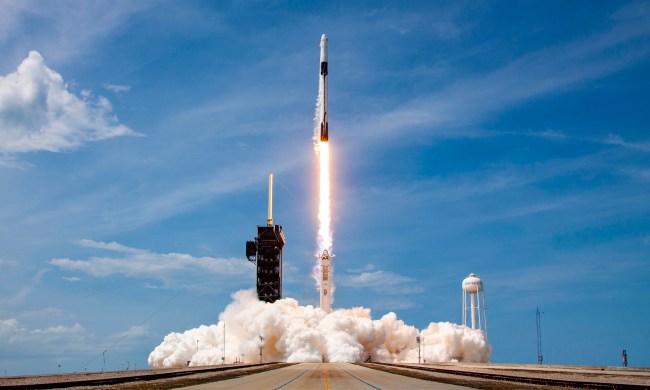Astronauts are taking to water to prepare for NASA’s highly anticipated crewed trip to the moon currently scheduled for 2024.
The space agency posted several tweets this week showing preparatory training sessions taking place at the Neutral Buoyancy Lab (NBL) at the Johnson Space Center in Houston, Texas.
The NBL includes a water-filled pool 62 meters long (202 feet), 31 meters wide (102 feet), and 12 meters deep (40 feet) that can hold up to 6.2 million gallons of water. While the pool fails to exactly replicate gravity conditions in space, NASA says the facility is currently the best method available for training astronauts ahead of missions.
The current activities taking place inside the pool are geared toward evaluating Johnson’s facilities for spacewalk testing, development, and crew training for the Artemis moon mission that will see the first woman and next man set foot on the lunar surface.
New suit. 🧑🚀 New tools. 🛠️ New mission. 🌙@NASA_Astronauts are preparing now for moonwalks planned for when we land the first woman and next man on the Moon — and they're practicing underwater to evaluate how we'll train for #Artemis missions. More: https://t.co/DPqGRKfmxH pic.twitter.com/hflHIWTbsj
— NASA's Johnson Space Center (@NASA_Johnson) September 23, 2020
While NASA has plenty of experience with space station missions and conducting spacewalks outside the orbiting outpost, it’s a little rusty when it comes to the kind of skills required for crewed moon missions, the last of which took place nearly five decades ago.
This means that astronauts at the pool facility are trying their hand at a range of tasks, including picking up samples of lunar regolith, examining a lunar lander, and, of course, planting the American flag.
They’ll also need to perfect the skill of climbing up and down a ladder, swinging a chisel, and performing moonwalks while wearing a spacesuit on a surface that has a gravitational force about 17% of that of Earth.
We're testing tools & developing training for lunar surface operations & moonwalks @NASA_Astronauts will conduct on Artemis missions. 🌙
This Friday, watch live as we speak with the astronauts training underwater! Submit your Q's with hashtag #AskNASA, & stay tuned for details. pic.twitter.com/lHXcwdTmRD
— NASA's Johnson Space Center (@NASA_Johnson) September 23, 2020
“This early testing will help determine the best complement of facilities for hardware development and requirements for future Artemis training and missions,” said Daren Welsh, extravehicular activity test lead for these Artemis preparation test runs. “At the same time, we are going to be able to gather valuable feedback on spacewalk tools and procedures that will help inform some of the objectives for the missions.”
Welsh added that while it’s possible to evaluate tools in a laboratory, “you can learn so much when you put a pressurized spacesuit on and have to work within the limitations of its mobility. These NBL runs are so valuable for understanding the human performance component and ensuring our astronauts are as safe as possible.”
The practical astronaut training isn’t all water-based. NASA is also using outdoor locations that resemble to some extent the sites it plans to visit on the moon, among them the lunar South Pole.


